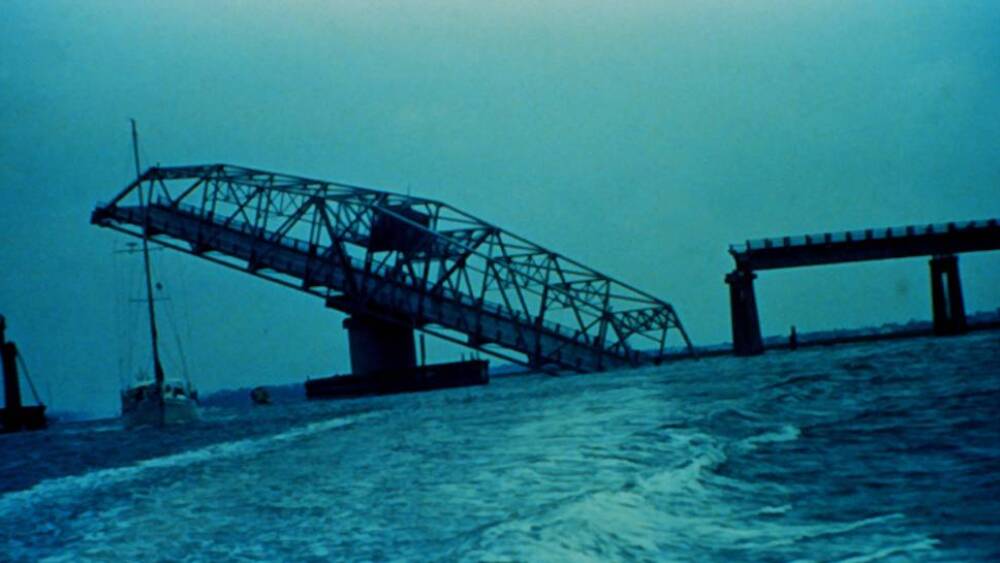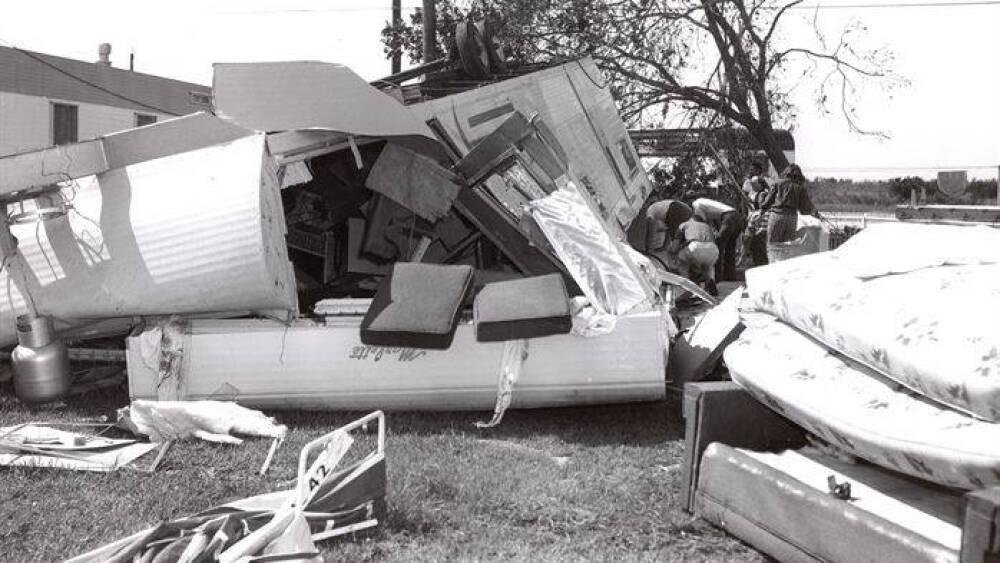Out of all of Charleston’s many seasons (tourism, wedding, shrimp, oyster…), I’m sure most will agree that hurricane season is the least favorite.
Running from the beginning of June to the end of November, it tends to be uneventful for the most part – except, of course – for that window of time between mid-August and early-October, when, like sitting ducks, we anxiously await whether the next Hugo will roar onto our shores.
It’s never too soon to make sure you have a plan in place, in case the worst does happen. Here are a few key ways to prepare:
❓ Know the difference | Warning: conditions expected within 36 hours vs. Watch: hurricane conditions are possible within 48 hours
❓Know the OPCON levels | OPCON – a.k.a the state’s emergency operation condition levels – is ranked between one and three – with a ranking of three meaning agencies are operating on a normal, day-to-day basis, and a ranking of one meaning a disaster is in active or imminent + emergency protocol is in full effect.
⛑ Build an emergency kit | Water (1 gal. per person per day), non-perishable + easy to prepare food (canned soups + veggies, dried meats + fruits, crackers, granola bars, peanut butter, etc.), first-aid kit, flashlight, extra cash, and a multipurpose tool (like a can opener or Swiss Army Knife)
🐶 🐱 Prepare your pets | Have enough water + food for your pets, and, if possible– have their vet records on hand + an ID tag on their collar
📑 Safeguard important documents | Have copies with you in a sealed zip-lock bag (I.D., insurance card, etc.)
🗺 Have a plan | Go over how to contact your person/people if you get separated, set a meeting place, and know evacuation routes
📻 Stay informed | Have a portable radio or TV, or use your cell, to follow the National Weather Service, the National Hurricane Center + local weather services on social media
📱Free resources that will keep you updated:
○ Tides Near Me | Tide times + conditions
○ SC Emergency Manager | Evacuation zones, closings + delays
○ AccuWeather: Weather Widget | Alerts, forecasts + animated radar maps
○ Dominion Energy Outage Map | Track area power outages
Read on to learn more about the hurricanes that have wrought the most havoc on Charleston.
The worst offenders
Hugo | 1989

Only pilings of the Atlantic House restaurant, which sat on stilts along the shore of Folly Beach, remained after Hurricane Hugo. The business never resurfaced after the storm, but you can bake your own version of their once-beloved cheese biscuits using the recipe found here | Photo provided by NOAA
Minutes before the clock struck midnight on September 21, 1989, the now-infamous Hugo made landfall on Sullivan’s Island as a Category 4 hurricane. The powerful storm brought with it 135+ mph winds (with gusts around 160 mph), as well as the highest recorded storm tide heights on the East Coast (20 ft. in Bulls Bay, S.C.).
Overnight, Hugo wreaked havoc on the Carolinas– particularly the Charleston area. An estimated 65% of buildings along the coast between Charleston + the state border were destroyed; countless trees toppled; and in S.C. alone, 13 lives were claimed (plus 22 deaths indirectly related to the storm).
Hugo caused $7 billion in damages (not adjusted for inflation), and until Hurricane Katrina in 2005 was considered the costliest storm in U.S. history. And 29 years later, Hugo still holds the title of the most destructive storm in South Carolina history.
Click here to read more about the impact Hugo had on Charleston.
Hurricane Joaquin + the 1,000-year flood | 2015
While Hurricane Joaquin never made landfall– in fact, only the fringes of the storm made it here– it still brought devastation of epic proportions. That’s thanks due in part to a once-in-a-thousand-years combination of weather events: cool air from a pressure system up North, warm temperatures out in the Atlantic, + tropical moisture from Joaquin all collided right off our coast. The effect? S.C. was soaked with one to two feet of rainfall– all over the course of just four days. To put that in perspective: rainfall– even a significant amount of it– is typically measured in inches.
The result? Catastrophic flooding. 410 roads + bridges were threatened by the water + had to be shut down. A jaw-dropping 36 regulated dams failed. 19 people lost their lives.
Georgia-South Carolina Hurricane | 1881
The National Hurricane Center didn’t begin naming storms until 1953. Back then, they were only designated female names. It wasn’t until 1979, in an effort to keep up with the times, that male names were added into the mix.
What’s now commonly referred to as the Georgia-South Carolina Hurricane touched down during high tide on Tybee Island, G.A. on August 27, 1881. Winds moved toward Charleston at speeds of 135 mph (the same as Hugo), ripping up homes + buildings in its path. By the time the storm was through thrashing the G.A./S.C. coast, 700 people had died.
Sea Islands Hurricane | 1893
As many as 2,000 people died when a then-unnamed hurricane walloped the Southeastern U.S. in August 1893. Hundreds of those deaths were in South Carolina.
The damage, which left 40,000 South Carolinians homeless, was so extreme that at the time The State newspaper compared it to Sherman’s March to the Sea.
These days, we’re able to access up-to-the-minute storm tracking at the push of a button on our phones. But back then, Charlestonians’ only option was to make the trek to the Charleston News & Courier office, where staff kept the latest updates posted on the wall outside.
Gracie | 1959
Clocking 120 mph winds + making landfall in S.C. as a category 3 hurricane, Gracie was nowhere near as strong as Hugo– but the significant damage that resulted makes the storm one worth remembering.
You can thank Gracie for indirectly playing a part in shaping Edisto Island as we know it today. The ‘shell hash’ sand you see at the beach was actually placed there in order to renourish the shore after the storm.
Also notable: Gracie wiped out the entire population of the marine isopod Cyathura Polita from the Ashepoo River.
Click here to check out a video showing news coverage during the storm
Matthew | 2016
The National Hurricane Services considers Hurricane Matthew to be the 10th most destructive hurricane in U.S. history. After sweeping through the state as a Cat. 1 hurricane in October 2016, over a third of South Carolina’s counties were considered eligible for federal disaster relief.
Four people in South Carolina were killed– but thankfully, the death toll was minimal due to then-Gov. Nikki Haley’s order to evacuate more than a million people from the coast ahead of the storm. Eastbound lanes along I-26 were reversed, and fleets of school buses were sent to transport evacuees.
Irma | 2017
By the time Irma reached South Carolina, it had been reduced to a tropical storm, and experts were downplaying the impact it would have on the Lowcountry. Needless to say– it came as a shock to many when Charleston was inundated with the worst tidal surge since Hurricane Hugo. A 10-foot tide pounded the shores, with water washing over the Battery and through the streets of downtown Charleston. Estimates put the cost of Irma at $50 billion.
Florence | 2018
What Florence lacked in physical destruction to the Holy City, she made up for in emotional devastation to its residents. At her peak, Hurricane Florence intensified to a category 4 hurricane and was headed straight for the S.C. coast. In preparation, Governor Henry McMaster ordered a mandatory evacuation for approximately one million residents in eight coastal counties. As the Lowcountry anxiously watched the slow-moving storm, hundreds of businesses boarded up their windows and the SCDOT reversed all lanes of I-26 to head away from the city. However; before making landfall on Sept. 14, Florence was downgraded to a tropical storm + quickly pivoted north – directly hitting the coast of Wilmington N.C. While Charleston was saved from destruction, the storm caused $24 billion in damage + destruction throughout the Carolinas and claimed 53 lives.


















